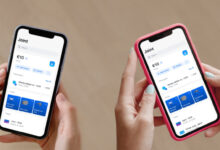In today’s global and diverse business environment, creating presentations that are accessible and inclusive is not just a legal requirement but also a moral imperative. Accessible presentations ensure that all participants, regardless of their abilities or disabilities, can fully engage with the content. This inclusivity is essential for effective business communication, fostering an environment where everyone feels valued and heard. This article explores the importance of designing accessible presentations and provides practical tips to ensure inclusivity in business communication.
The Importance of Accessible Presentations
Accessible presentations are crucial for several reasons:
Legal Compliance
Many countries have enacted laws and regulations that require businesses to provide accessible content. In the United States, the Americans with Disabilities Act (ADA) mandates accessibility in various forms of communication, including digital content. Non-compliance can result in legal repercussions and damage to a company’s reputation.
Ethical Responsibility
Inclusivity is a core value that reflects an organization’s commitment to equality and respect for all individuals. By ensuring that presentations are accessible, businesses demonstrate their dedication to creating an inclusive environment where everyone has an equal opportunity to participate.
Enhanced Engagement
Accessible presentations enable all audience members to engage with the content, leading to better understanding and retention of information. This engagement is critical for achieving business objectives, whether it’s closing a deal, training employees, or communicating a new strategy.
Wider Reach
An inclusive approach to presentations can also expand a company’s reach. By considering the needs of diverse audiences, businesses can connect with a broader range of stakeholders, including customers, partners, and employees.
Key Principles of Accessible Presentation Design
Designing accessible presentations involves considering various aspects of content delivery, from visual elements to spoken words. Here are some key principles to guide the process:
1. Use Clear and Simple Language
Avoid jargon and complex language that might be difficult for some audience members to understand. Use short sentences and straightforward vocabulary. This approach benefits everyone, including those with cognitive disabilities and non-native speakers.
2. Provide Alternative Text for Images
Images, graphs, and charts should have descriptive alternative text (alt text) that conveys the same information to individuals who cannot see the visuals. Alt text ensures that screen readers can interpret the content accurately.
3. Ensure Readable Text
Choose fonts that are easy to read, such as Arial, Verdana, or Calibri, and use a font size of at least 18 points. Ensure sufficient contrast between text and background to make the content readable for individuals with visual impairments. Tools like the Web Content Accessibility Guidelines (WCAG) contrast checker can be helpful.
4. Use Captions and Transcripts
Provide captions for any audio or video content included in the presentation. Transcripts are also beneficial for those who prefer to read the information or cannot access the audio. Captions and transcripts support inclusivity for individuals who are deaf or hard of hearing and those who process information better through reading.
5. Structure Content with Headings and Lists
Organize content using clear headings and bullet points to make it easier to follow. This structure helps screen readers navigate the presentation and benefits all audience members by breaking information into manageable sections.
6. Include Descriptive Links
When adding hyperlinks, use descriptive text rather than generic phrases like “click here.” Descriptive links provide context about the destination, which is helpful for screen reader users and everyone else.
7. Use Consistent and Simple Layouts
A consistent and simple layout ensures that the presentation is easy to navigate and understand. Avoid cluttered slides and stick to a clean design that highlights the main points without overwhelming the audience.
8. Test Accessibility
Before finalizing your presentation, test it for accessibility. Various tools can help with this process, such as Microsoft’s Accessibility Checker in PowerPoint or third-party accessibility software. Testing ensures that your presentation meets accessibility standards and identifies any areas for improvement.
Practical Tips for Creating Accessible Presentations
Choose Accessible Templates
When starting a new presentation, select templates that are designed with accessibility in mind. Many presentation software programs offer accessible templates that adhere to best practices for layout, contrast, and readability.
Use an AI PPT Maker
Utilizing an AI ppt maker can streamline the process of creating accessible presentations. Just by entering a prompt it will generate a script, find the proper footage, and apply text & background music automatically. It will save time and ensure that your presentations are inclusive from the start.
Consider Different Learning Styles
People process information in various ways. Incorporate multiple formats, such as text, images, audio, and video, to cater to different learning styles. This approach ensures that your presentation is engaging and accessible to a diverse audience.
Provide Handouts and Materials in Advance
Distributing handouts and supplementary materials before the presentation allows attendees to familiarize themselves with the content. This practice is particularly beneficial for individuals who need more time to process information or use assistive technologies.
Engage with Your Audience
Interactive elements, such as polls, Q&A sessions, and discussions, can enhance engagement and inclusivity. Encourage participation from all attendees and be mindful of giving everyone an opportunity to contribute.
Be Mindful of Color Use
Color can enhance the visual appeal of a presentation, but it should be used thoughtfully. Avoid relying solely on color to convey information, as individuals with color vision deficiencies might miss important details. Use patterns, labels, and text to complement color usage.
Practice Inclusive Speaking
When delivering your presentation, speak clearly and at a moderate pace. Use inclusive language that respects all individuals and avoid idioms or phrases that might be unfamiliar to some audience members. Pausing occasionally allows everyone to catch up and process the information.
Seek Feedback
After the presentation, solicit feedback from your audience about the accessibility and inclusivity of the content. Use this feedback to make continuous improvements and demonstrate your commitment to creating accessible presentations.
Leveraging Technology for Accessibility
Technology plays a significant role in enhancing the accessibility of presentations. Here are some tools and techniques to consider:
Screen Readers
Screen readers convert text into speech, allowing visually impaired individuals to access digital content. Ensure that your presentation software is compatible with popular screen readers like JAWS, NVDA, or VoiceOver.
Speech Recognition Software
Speech recognition software can transcribe spoken words into text in real-time. This tool is beneficial for individuals who are deaf or hard of hearing and for those who prefer reading over listening.
Automated Accessibility Checkers
Many presentation tools, such as Microsoft PowerPoint and Google Slides, offer built-in accessibility checkers. These tools scan your presentation for common accessibility issues and provide suggestions for improvement.
AI-Driven Tools
AI-driven tools, including AI PPT makers, can automate many aspects of creating accessible presentations. These tools can analyze your content, suggest improvements, and ensure compliance with accessibility standards. They can also assist in generating alt text for images and providing real-time captioning for audio content.
Conclusion
Designing accessible presentations is essential for ensuring inclusivity in business communication. By following best practices and leveraging technology, businesses can create presentations that are engaging, informative, and accessible to all audience members. The commitment to accessibility not only fulfills legal and ethical responsibilities but also enhances engagement, broadens reach, and fosters a culture of inclusivity.
Incorporating tools like an AI PPT maker can simplify the process and ensure that accessibility is built into your presentations from the start. As businesses continue to embrace diversity and inclusion, accessible presentations will play a crucial role in effective communication and the achievement of organizational goals.




